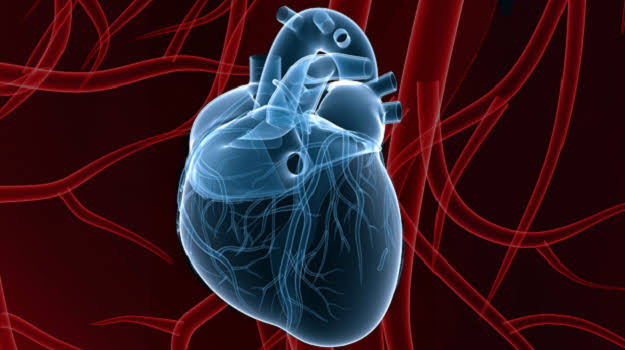Heart surgery future advancements

It is difficult to predict exactly what advancements will be made in heart surgery over the next 50 to 100 years, as it will depend on many factors such as advances in technology and ongoing research.
However, some areas that are likely to see significant progress including:
1. Minimally invasive surgery: It is a surgical technique that uses small incisions or natural openings in the body to perform procedures, rather than a large open incision. This type of surgery is also known as laparoscopic surgery, endoscopic surgery, or keyhole surgery.
Some examples of minimally invasive heart surgeries include:
- Catheter-based procedures such as angioplasty and stenting, which use a thin tube called a catheter to access the heart through a small incision in the groin or arm.
- Robotic-assisted surgery, which uses a robot to control small instruments and a camera inside the patient’s chest.
- Transcatheter aortic valve replacement (TAVR), which uses a catheter to place a replacement valve inside the patient’s own aortic valve.
Benefits of minimally invasive surgery include:
- Smaller incisions, which means less pain, bleeding, and scarring.
- Faster recovery times.
- Lower risk of complications.
- Shorter hospital stays.
- Reduced costs.
In the future, it’s likely that even more types of heart surgery will become minimally invasive, making it possible to treat more patients with less risk and less recovery time.
2. Tissue engineering and regenerative medicines: Tissue engineering and regenerative medicine are fields of research that aim to repair or replace damaged or diseased tissue using a combination of cells, biomaterials, and growth factors. In heart surgery, these methods have the potential to repair or replace damaged heart tissue, reducing the need for transplantation.
Some examples of tissue engineering and regenerative medicines in heart surgery include:
- Cell therapy: This involves using a patient’s own cells, such as stem cells or progenitor cells, to repair or regenerate damaged heart tissue. For example, stem cells can be harvested from the patient’s bone marrow or fat tissue, and then injected into the heart to repair damaged heart muscle.
- Biomaterials: Biomaterials such as hydrogels, scaffolds, and patch materials can be used to support the growth of new heart tissue. For example, a patch made from a synthetic or natural material can be used to repair a hole in the heart.
- Tissue engineering: It involves growing replacement heart tissue in a laboratory, either from a patient’s own cells or from stem cells. For example, scientists have been able to grow heart muscle cells on a scaffold, which can then be implanted into the heart to repair damaged tissue.
The field of tissue engineering and regenerative medicines is still in its early stages, it has the potential to revolutionize the way we treat heart disease. In the future, it’s likely that these methods will become more sophisticated and widely adopted, making it possible to repair or replace damaged heart tissue more effectively and with less risk.
3. Artificial hearts and heart assist devices: Artificial hearts and heart assist devices are mechanical devices that are designed to mimic the function of the human heart. They can be used as a bridge to transplant, to keep a patient alive while they are waiting for a heart transplant, or as a permanent replacement for a failing heart.
Examples are:
- Total Artificial Heart (TAH): A TAH is a replacement for both ventricles and the four heart valves. It’s used as a bridge to transplant, keeping the patient alive while they are waiting for a heart transplant.
- Left Ventricular Assist Device (LVAD): An LVAD is a mechanical pump that is implanted in the patient’s chest to help the left ventricle pump blood. It can be used as a bridge to transplant or as a permanent replacement for a failing heart.
- Right Ventricular Assist Device (RVAD): An RVAD is a mechanical pump that is implanted in the patient’s chest to help the right ventricle pump blood. It’s typically used in patients with heart failure who are not candidates for LVADs.
The artificial hearts and heart assist devices have improved over the years and have become smaller, more reliable, and more durable. In the future, it’s likely that these devices will become even more compact and efficient, making them more widely available and accessible to patients.
Additionally, the development of new materials and technologies may make these devices even more biocompatible and less prone to complications.
Currently these are only used in specific cases and are not a replacement for a heart transplant in most cases.
4. Gene therapy: Gene therapy is a medical technique that involves the introduction of healthy genes into a patient’s cells to treat or prevent genetic disorders.

In the context of heart disease, gene therapy has the potential to treat or prevent genetic conditions that affect the heart.
Some examples of gene therapy in heart disease include:
- Lysosomal storage diseases (LSDs): Lysosomal storage diseases are a group of inherited disorders caused by mutations in genes that encode enzymes responsible for breaking down certain substances in the body. Gene therapy has been shown to be effective in treating some LSDs, such as Pompe disease, by introducing a healthy copy of the gene encoding the missing enzyme into the patient’s cells.
- Cardiomyopathies: Cardiomyopathies are a group of diseases that affect the heart muscle. Gene therapy has been shown to be effective in treating some cardiomyopathies, such as Duchenne muscular dystrophy, by introducing a healthy copy of the gene encoding the missing protein into the patient’s cells.
- Hypertrophic cardiomyopathy (HCM): HCM is a genetic disorder that affects the heart muscle and causes it to become thickened. Gene therapy has been shown to be effective in treating some forms of HCM by introducing a healthy copy of the gene encoding the missing protein into the patient’s cells.
Gene therapy is still an experimental field and is still in the early stages of development. However, it has the potential to revolutionize the way we treat genetic heart conditions by correcting the underlying genetic defects that cause the disease. In the future, it’s likely that more genetic conditions will be treated with gene therapy, and that the technique will become more precise and effective.
5. Predictive and personalized medicine: Predictive and personalized medicine are fields of medicine that use data and technology to predict and prevent disease, and design personalized treatment plans for patients. In the heart disease, predictive and personalized medicine has the potential to identify patients at risk of developing heart disease and tailor treatments to their specific needs.
Predictive and personalized medicine is a rapidly developing field, and new technologies and techniques are being developed all the time. In the future, it’s likely that predictive and personalized medicine will become more sophisticated and widely adopted, making it possible to identify and treat heart disease more effectively and with less risk.
It’s important to note that predictive and personalized medicine is still in the early stages of development, and more research is needed to understand the full potential of these technologies and how they can be used to improve the diagnosis of heart disease and surgery.


